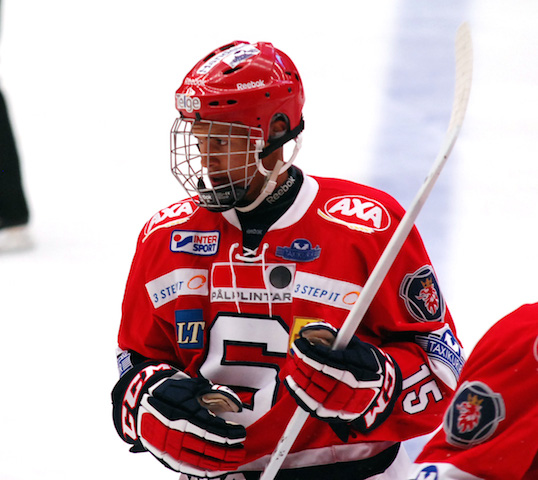
Catch the faller.
It’s an idea that is becoming more and more popular among those that follow the NHL entry draft.
It seems like a common occurrence in many draft years for a highly-touted, highly-ranked prospect to unexpectedly tumble down the draft board before eventually being snatched up. And, in some of these cases, the team that’s doing the catching ends up reaping great rewards from it.
Cam Fowler was considered by many sources as being a Top 3 pick in the 2010 NHL Entry Draft, only to fall all the way down to 12th overall, where he was selected by the Anaheim Ducks. The 23 year-old puck-moving defenseman has already put up three 30-point seasons in his young career, so it’s safe to say that the Ducks got quite a steal with that pick.
One of the biggest stories heading into the 2012 draft was that of Valeri Nichushkin. A man-child at 6’4″ that could skate like the wind and protect the puck at a professional level at only 18 years of age, Nichushkin was considered by many scouts as a Top 5, or even Top 3, talent available in the draft. However, many were concerned about drafting Nichushkin because of his Russian heritage, which was seen as an increased risk of him playing in Russia’s KHL instead of the NHL. Nevertheless, the Dallas Stars gladly snagged Nichushkin 10th overall and have already been reaping some rewards, with the powerful winger scoring 34 points in 79 games in his rookie season and making the Russian team at the 2014 Olympics in Sochi.
All of this then naturally begs the question: who could be that “faller” in the 2015 draft that ends up being a major steal for one lucky team?
Look no further than defenseman Oliver Kylington.
Kylington is a slick, smooth-skating offensive defender coming out of the pro leagues in Sweden. It only takes a few minutes of watching Kylington to see exactly what he brings to the table. He’s an effortless skater, one of the most mobile players in the entire draft, and possesses an immense amount of skill when it comes to both carrying the puck as well as distributing it to teammates. He thinks the game at a level well beyond his age, and has the creativity to make something happen any time he engages offensively.
Heading into this season there was a lot of excitement around Kylington, and for good reason. He was a regular in the Swedish Elite League in 2013-2014 at only 16 and 17 years of age, an incredibly rare feat, and his strong play that season led many to believe that he could be a Top 10 selection this year. He was ranked the #1 International Skater by NHL Central Scouting as recently as this past January.
Unfortunately for Kylington, however, his stock has plummeted since then. Current pre-draft rankings have him universally lower than where he was not all that long ago. He’s now 6th among International Skaters for NHL Central Scouting, 24th with TSN, 28th with Future Considerations, 29th with Hockeyprospect.com and 32nd with the International Scouting Services.
Why such a dramatic drop? There have been a few reasons listed among most critiques, but the main theme seems to be defensive ability. While no one will question Kylington’s proficiency at joining the attack and producing points, more than one scout has written about him being a little too offense-oriented, causing him to regularly neglect his defensive duties. As much as teams want a player than can kickstart the offense from the back end, many are understandably hesitant about a player that could be a major defensive liability, especially when such a player lacks the big size that teams always covet.
Another, and slightly more intriguing reason, is because of injury. While many top prospects were out showcasing their talents over the course of the season, Kylington suffered an injury while playing for Sweden in an exhibition game prior to the 2015 World Juniors. While many prospects, such as Lawson Crouse, Timo Meier and Mikko Rantanen, boosted their draft stocks while playing in the prestigious event, Kylington was stuck watching from the sidelines. It could also be reasonably assumed that Kylington’s level of play over in Sweden took a hit in the time immediately after as he recovered from the injury, which might have made him look less impressive in the eyes of scouts.
Taking all of this into consideration, it seems like not too far of a stretch to start wondering about just how much better Kylington might be than his current draft rankings indicate. The old adage is that you can’t teach skill, and in terms of raw hockey skills, Kylington is near the top of the draft, arguably on par with other top eligible defensemen such as Ivan Provorov and Zach Werenski. As many holes as Kylington’s defensive game may have right now, those are able to be fixed and smoothed out over time with proper coaching and development. While his injury allowed other prospects to continue rising and pass him on draft boards, that doesn’t come close to negating the elite skating, puck control and vision that he possesses, traits that will be incredibly valuable if (when?) he reaches the NHL.
There’s still a very good chance that Kylington won’t get selected until somewhere in the 20s, or possibly even later than that, but don’t be surprised if, five or ten years down the road, he turns out to be the biggest steal of the 2015 NHL Draft.